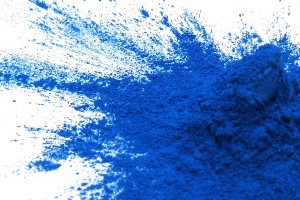WHAT IS FLOCK ?

Flock can be made from natura lor synthetic materials such as cotton, rayon, naylon and polyester.
There are two types of flock – milled and cut.
Milled flock is produced from cotton or synthetic textile waste material. Because of the manufacturing process milled flock is not uniform in lenght.Cut flock is produced only from first quality filament synthetic and cellulose materials. The cutting process produces a very uniform lenght of flock. Lenghts can be obtained from 0,3mm- 5,0 mm and 1.7 dtex- 22 dtex in diameter.
The fineness of the flock lenght of fibres and adhesive coating density determine the softness of the flocking. It should be noted however that fine or short flock is difficult to work with, since it has a tendency to ball-up during processing.
Milled flock has the advantage of being the lowest cost and the softest, but has the least abrasion and wear resistance. Rayon is a little bit beter on wear resistance and nylon is the best. For cut flock, rayon is the least expensive with the least wear resistance. Cut nylon is the best grade of flock and produces a good feel but is also the most expensive. Cut polyester is basiclly used for industrial applications such as autobile window seals, glove compartments, and roofing. Besides cutting or milling, flock manufacturing includes several other steps.
After cutting the flock is cleaned of oils that accumulated during processing. It is vat dyed to any number of colours, and then chemically treated to enable the fibres to accept an electrical charge. Since the fibres are all dielectric, a certain amount of conductivity must be present for electrostatic flocking process to occour. When the process is complete the fibres are spin dried and then oven dried to a specific moisture content. Note that flocking fibres are never totaly dried, since moisture content adds to their conductivity. Finally the flock is packaged in moisture proof bags that maintain proper humidity.

